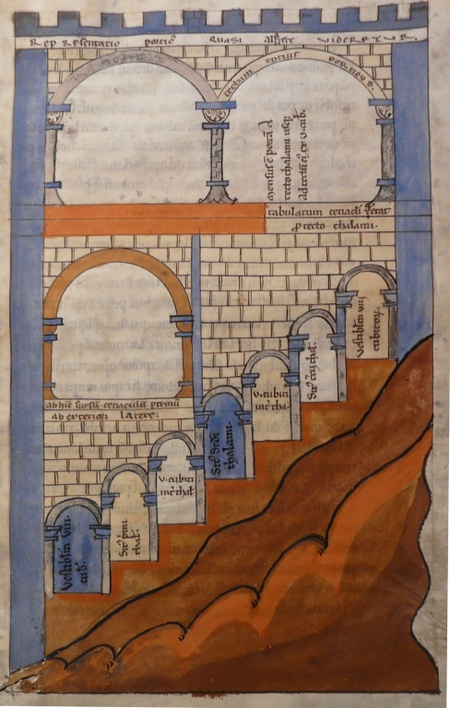The 12th century gave rise to the Gothic style, from Notre-Dame Cathedral to Dunfermline Abbey, the Tower of London and York Minster some of our most iconic buildings have links with the period.
But despite the complexity of the earlier parts of these landmark structures, there are no technical drawings used for building projects in the record until the end of the thirteenth century.
Now research by a University of Aberdeen academic for a new book has identified architectural drawings, plans and elevations created by a Scottish clergyman 120 years earlier than those previously identified.
Dr Karl Kinsella, a Lecturer in Medieval Art History, has shown that a twelfth-century Scottish theologian named Richard, who worked at an important abbey in Paris called Saint Victor earning him the name Richard of Saint Victor, alongside Richard the Scot, is the first person to use the word ‘plan’ in reference to a drawing.
Richard was born around 1125 in Scotland and as a young man he moved to Paris in approximately 1140 to become a member of the Augustinian abbey at Saint Victor.
The abbey was well-known at the time as an open school with one of the best libraries in the world.
Richard rose to the level of prior, effectively second-in-command, and at some point in the 1160s he started writing a biblical commentary on the Book of Ezekiel, a text that describes a temple, courtyards, gatehouses, but in words that make little sense today.
In his book ‘God’s Own Language: Architectural Drawing in the Twelfth Century’ Dr Kinsella demonstrates how Richard used over a dozen plans and elevations to illustrate what exactly the prophet saw, drawing on contemporary developments in the practice of geometry to do so.
He said: “This is the earliest evidence we have of a complete visual description of a building including several plans, elevations and sections but they appear in this strange theological work instead of coming out of building sites.
“We still use Richard’s language for the drawings, since he calls them his ‘plans’ or planum in Latin.
“It seems likely that Richard gets the idea not from builders – as we don’t have architects at this point – but from talking to Jewish scholars around him, who used a similar technique. Saint Victor was known as a place where Jewish learning was accepted. For Richard, talking to a Jewish scholar was like ‘picking up the phone’ to the Old Testament. Richard took a good idea and developed it into something that could all recognise today, architectural drawings.
“Richard died in 1173, but the earliest manuscript containing the work comes from Saint Victor during his lifetime, meaning he probably oversaw its production. There are about two dozen manuscripts around Europe containing the commentary, each containing some or all the drawings. So, it's not just obscure little thing that no one saw, it’s not far off the twelfth-century equivalent of a bestseller.
“Collections of art and architectural theoretical texts frequently leave out the Middle Ages, a period of time that arguably defined much of the urban space throughout Europe, so to see Richard as our earliest documented architect significantly adds to our understanding.”
‘God’s Own Language: Architectural Drawing in the Twelfth Century’ is published by MIT https://mitpress.mit.edu/9780262047746/gods-own-language/


